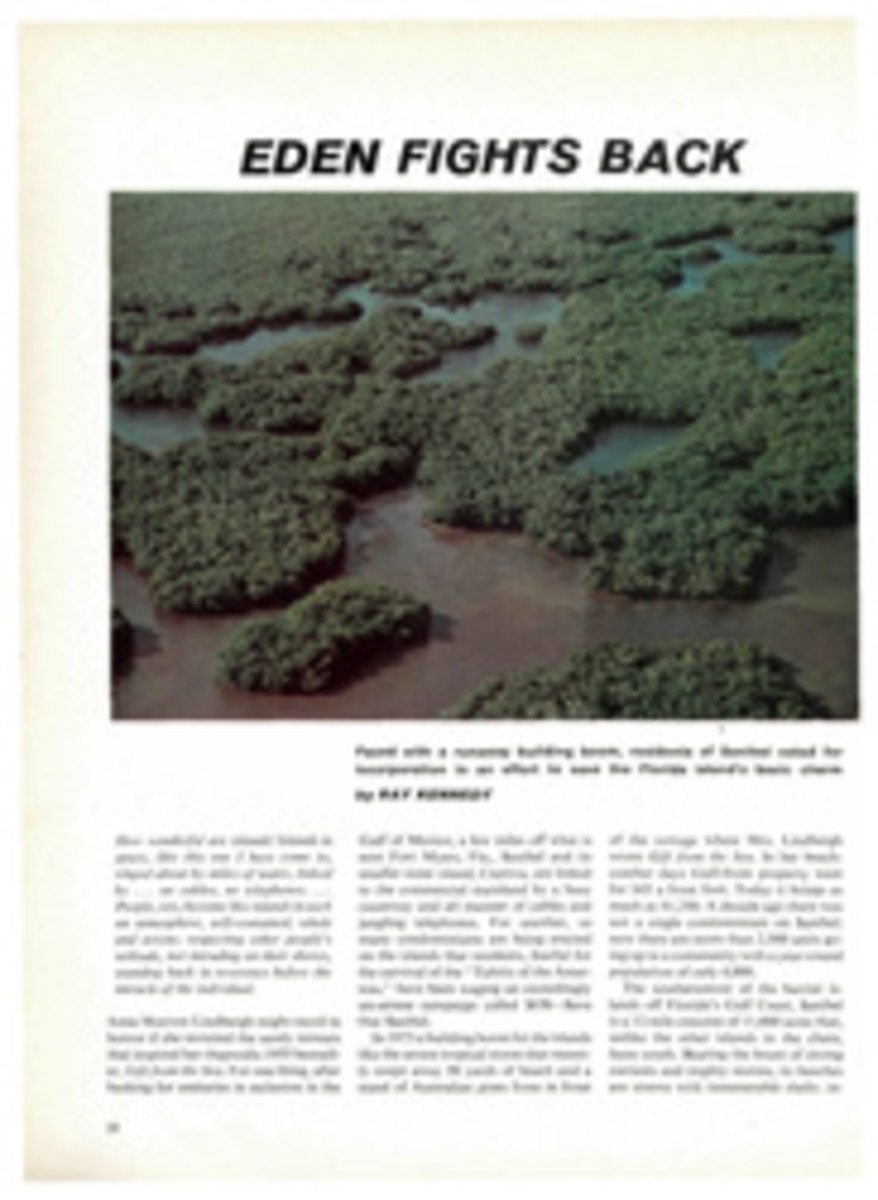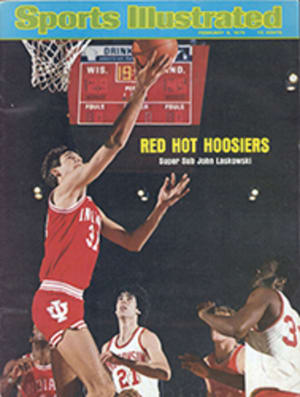
SCORECARD
ONE STEP FORWARD
It matters less whether Boston Bruin Leftwinger Dave Forbes is or is not convicted for his attack on Minnesota's Henry Boucha (SI, Jan. 27) than that the incident occurred in the first place. League rules and tradition should have been of such stringency and moral suasion that personal attacks of that nature would have been unthinkable. If, in a moment of stress, an attack was made, the league would have had precise and effective machinery to deal immediately with the offender long before anybody thought to bring him before a court of law. This is said with full appreciation for the firm measures taken by National Hockey League President Clarence Campbell.
The NHL Players Association, which in the past has been remarkably indifferent to violence on the ice, ignoring occurrences quite as serious as the Forbes-Boucha affair, seems now to have recognized the necessity for action. Through its director, Attorney R. Alan Eagleson, the association recommended last week that any player penalized for deliberate injury or a deliberate attempt to injure be automatically suspended pending a hearing. It asked further that the hearing take place as soon as possible after the incident.
It is a start, but not until players and fans react with the same shock and disbelief that, say, baseball people do on those extremely rare occasions when a bat is raised in anger will hockey get the monkey of thoughtless brutality off its back.
DEPTHS AND LOWER DEPTHS
Cleaning up, it is often enough observed, can end in a mess. A nice little case in point is New York Harbor. When it was bank-to-bank garbage, at least the shipworms—those bivalve mollusks that in their larval stage make vermicular lacework of wooden piers—stayed away. But with a gradual flushing out of the lower reaches, the shipworms are back dining away merrily on dock underpinnings and the bottoms of wooden barges.
This could be trouble, but the prospects are nowhere near as bleak as those envisioned in the latest story making the conservationist rounds. It goes: First, the good news. By 1985 we'll all be drinking sewage water. Now the bad. There won't be enough to go around.
HE LOATHES THE DEAR SILVER
About midway through the season, the Puerta Vallarta Dolphins of the Northwestern Mexico Winter League were living up to the sleepy image of their coastal village, best known as the sometime winter stopover of Elizabeth Taylor. Figuring anything in a calm, the manager of two years, Minnie Minoso, agreed to Pitcher Javier Reyes' suggestion that, like Oakland, the team make a clean break with the past and grow beards and mustaches. Happy to say, it worked. Puerta Vallarta hared through the rest of the schedule and into their division title. That would be the end of the story, except for what happened to Minoso, who at 52 is just five pounds over his major league playing weight and a bit vain about his youthful appearance. His beard grew out snow white.
NERVE THEY'VE GOT
Call it cheek, call it chutzpah. It is always in plentiful supply, but if two cases reported recently are a bellwether of the generation coming up, head for the Alps.
First, the 12-year-old who stood outside the Houston Aeros' dressing room and demanded of Gordie Howe, "Sign my stick!" Responded a slightly shaken Howe, "Say please."
"Okay, please," the kid answered. "Now," said Howe, "put it all together."
"Sure," the boy said. "Gordie, would you please sign my damn stick?"
That lad was a dream next to the 17-year-old who dropped this on the Kansas City-Omaha Kings basketball team. "Please send me three decals," he wrote, "three bumper stickers, a schedule, team and individual photos, ticket order forms, stadium diagram and photos, a list of things to buy, any past and present programs, yearbooks, media books, press guides, rosters, old publications, autographs, scorecards, photos, posters, pennant patches, badges, magnets, etc. Also send anything on upcoming season, anything left from giveaway days, and send anything else free. Also send anything on Nate Archibald (autograph, photo, etc.). Thank you."
He got one decal.
SKITTY CAT
The image leaps to mind of this scene at the downhill finish line in, say, Schnapps, Austria. Here comes the winner, flashing along like lightning, sliding roughly on his left kidney, feet up and arms flailing helplessly. He slashes through the clocks, wipes out the press row, zings through the lodge picture window and ends up somewhere just outside Vienna. The racer is wearing a skintight, ultrashiny, plasticized racing outfit, a thing affectionately called a cat suit.
Officials call the suits a lot of other names, all bad. If one were to line up a cat suit alongside the East German skinsuit (SI, Aug. 12, 1974), the swimming outfit would look like a shag rug. These ski togs are really tight, as though the wearer had been spray-painted while turning slowly, and then had taken a felt-tip pen and drawn in pretend zippers.
No question but that the Italian-made cat suits, virtually airtight and wrinkle-resistant, provide more speed than any previously made—though not nearly as much as the two or three seconds claimed by some racers. Undoubtedly, some of the speed is psychological. One skier raved about the eerie feeling of speed; his cat suit made a sort of whistling sound rather than the hammering noise of regular suits, he said.
But at the first World Cup race in Val-d'Isère, Italy's Franco Tach, an otherwise undistinguished downhiller, fell at the top of a traverse and began to slide. And slide. And slide and slide. With no friction to slow him, he wiped out the safety nets and scooted onto the women's downhill course next door. Shaken but alive, he later described the sensation as that of a pebble skipping across the surface of a pond.
Exactly. FIS chief Marc Hodler called the suits "deadly" and demanded a change. This edict had about the same effect as the pebble on the pond until the insurance companies stepped in. They couldn't risk insuring anyone who might slide off the world, they said.
End of problem? Well, yes and no. The cat suits are now illegal for racing. Still, some World Cup racers show up at starting lines looking awfully sleek. They are wearing their cat suits inside out.
MARSUPIALS IN THE SOUP
The Endangered Species Act of 1973 created a new category, "threatened," to describe the plight of a creature that is not yet in imminent danger of extinction but which is "likely to become an endangered species in the foreseeable future." The nice distinction has proved to be little more than a convenient pigeonhole in which to stash hard decisions. Three varieties of Australian kangaroos—the red, the eastern and the western gray—are living (but barely) testimony to that.
Aside from the weaseling language, what could do the animals in is the inability of either the U.S. Department of Interior or the Australian government to stand up to special interests. Twice in the last two years Interior has proposed to call the kangaroos what they are, endangered, and twice it has backed down when importers, who provide the pelts to manufacturers of coats, purses, shoes, stuffed "koala bears" and other products, objected. Endangered species cannot be imported; threatened kangaroos can be, if the exporting nation certifies that the hides are the result of a "sustained yield management" program. After a long delay Interior listed the three kangaroos as threatened.
This is of little help to the Australian government. It would like to conserve more of the country's wildlife than it does, but it is hampered because jurisdiction over hunting belongs to the five states. And while it has banned exports of kangaroo hides, it wonders how long it can maintain the ban against the strong pressure of exporters, who are as organized Down Under as importers are here. The government feels it can hold the line against further depredation of kangaroos only if Interior lists them as endangered. And so it goes.
MYSTERIOUS WEST
The news release from something called the National Table-Tennis League announced, "Pro Ping-Pong, Republic of China vs. Seattle Sockeyes" at the Norway Center on Jan. 24 and then, reprinted here in its entirety, this, under the heading Hard on the Balls:
"A pro ping pong ball must not be less than 37.2 mm and not more than 38.2 mm in diameter, and not weigh more than 2.53 gr. (grains).
"Tests made by the Seattle Sockeyes show that after 324 chops, 173 loops, 97 drives, 171 spins, 624 loops, the ball only bounces 211 mm instead of 235 mm when dropped from a height of 305 mm onto a specially designed 'U.S. STEEL' steel block. How about that!
"Skookum guys those Seattle Sockeyes."
You bet.
BY THE BOOK
A notebook was turned in to the lost-and-found department at New York's Aqueduct park this winter. Filled with do-it-yourself advice on how to play the races, it is a marvelous insight into the workings of a horseplayer's brain.
The book begins with admonishments. No. 1, for example, is "Keep kitty money separate." No. 5 advises the owner not to make extra bets when ahead. No. 6 reads, "If panic sets in, stop." This is followed by "Be patient." Further along, the bettor warns himself, "Don't borrow from kitty," and "Don't bet expense money." No. 18 is "Record stupid bets" and, finally, No. 21 exhorts, "Don't panic at end of the week."
The notebook's owner never tried to retrieve it. Aqueduct officials speculate that he had either memorized its contents or was trying to forget them. One further thought. He might have panicked.
MEANINGFUL NUMBERS
Not all statistics need be wasteful extensions of the obvious (SCORECARD, Jan. 13). Take, for instance, the performance figures over the last five years of Phil Esposito. Developed by National Hockey League Statistician Ron Andrews, they show that the Boston Bruin forward would have been every bit as much a scorer in the hard-muscled, six-team NHL of old as he is in today's softer expanded league.
In the 1969-70 season, when Esposito came in second in the scoring race, he led the league with 43 goals, five more than runner-up Stan Mikita. In 1970-71 Espo had 76 goals to second-place Johnny Bucyk's 51. He got 66 the next year, when nobody else scored more than 50; 55 in 1972-73, three and five goals ahead of Mickey Redmond and Rick MacLeish in second and third place: and last year 68. Rick Martin was closest to that with 52.
"What bothers me," says Andrews, "is that if Espo scores 80 goals this season, a lot of people will dismiss the feat because this is an expansion year and bring up Maurice Richard's 50 goals in 50 games during the 1944-45 season.
"They seem to forget that '44-45 was a wartime year. Aside from Bill Durnan, who played with The Rocket for Montreal, there were only two regular goaltenders that season—Harry Lumley and Mike Karakas. And there were a lot of other very good players in the armed services."
HOLD ON, PLEASE, PECK, PECK, PECK
The Society for the Protection of New Hampshire Forests is going one better those companies that ply telephone callers with Muzak while they are on hold. Callers waiting on its lines hear a variety of forest sounds, including birdcalls and, alas, the insistent tapping of a woodpecker.
ILLUSTRATION
THEY SAID IT
•Dale Bandy, Ohio University's new basketball coach, on assistant coaches and head coaches: "I never realized there was such a difference between making a suggestion and making a decision."
•Bep Guidolin, Kansas City Scouts coach, asked if he has nightmares about his expansion team: "You gotta sleep before you have nightmares."

